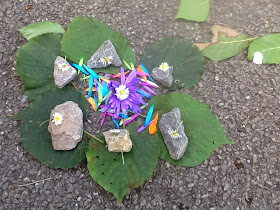Blending Techniques
Soft pastels are one of my year three classes most favourite mediums They love experimenting with smudging and blending techniques. This was the first lesson they had used them and what an exciting time it would turn out to be. The class text was Anthony Browne's ZOO. The broadness of this text really gave me the freedom to plan lots of opportunities for the children to explore different mediums. This particular session we looked at different animal eyes and tried to guess the animal it belong to. The children then got the select an eye of their choice to recreate using soft pastels. It was just seconds after taking this photograph that another class cooking pancakes set off the fire alarm. We spent then next 45 minutes on the playground waiting for the fire brigade to switch off the alarms. Luckily there was no real fire just some smoke. Though it was pleasing to hear my class worry about if their art work would be burnt or if they would have time to finish it before home time.
As a filler in the next session to allow for those who didn't get to finish, due to all the excitement of the visit from the fire brigade, I did a ripped paper animal print collage.
.jpg)

















 Lighthouses made from Pringle pots. Yes Pringle pots. I know that a large pot of Pringles contain an entire days worth of calories but I did have help in eating all 30 tubes so that my year 1 class could complete this project.
Lighthouses made from Pringle pots. Yes Pringle pots. I know that a large pot of Pringles contain an entire days worth of calories but I did have help in eating all 30 tubes so that my year 1 class could complete this project. 














